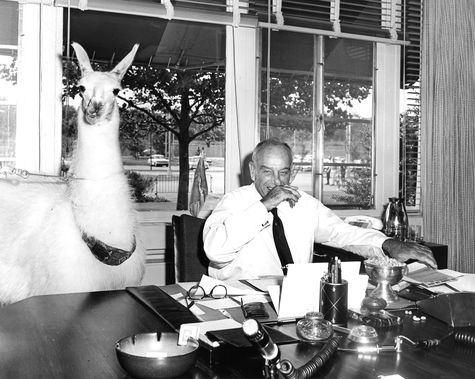Have you read Shannon’s post about our gallery experience with Anytown, USA during Museum Forum for Teachers? After we imagined businesses, shops, and restaurants inspired by typography, we moved into a gallery in Variations on Theme with figural works of art. In this fun, creatively-charged gallery experience, we projected character traits and narratives onto the ambiguous figures.
To warm up, we created scribble characters and characterized one as a large group. Then, small groups of four or five people turned their attention to the artworks in the gallery. Each group chose two figures to explore and characterize. Then, each group wrote a short piece of dialogue between the two figures. To add a little challenge, each group randomly chose one line of dialogue to incorporate. Though it may seem counterintuitive, limitations within a lesson actually inspire more creativity than a completely open assignment.
These dialogue lines included:
- What is that smell?
- You are never going to believe what just happened…
- I have never been so embarrassed.
- No, I’m not kidding.
- Tell me it isn’t permanent!
- Did you get dressed in the dark?
- Happy birthday!
- I tried everything I could…
- What’s on your face?
- I heard it on TV…
- I’m telling you…it won’t work.
Most of the groups’ conversations between artworks were light-hearted and humorous. However, each conversation was diverse with rich characterization. I really enjoy experiences when art-viewers combine what they see visually with their own experiences and ideas to create unique interpretations.
It would fun to tweak the creative twist for a classroom experience. Instead of incorporating a specific line of dialogue, try assigning the students a specific historical era or geographic location to research as a setting for a conversation between two artworks. Or, ask the students to create conversations between a figure in a work of art and a historical or literary figure. One of our Museum Forum participants suggested that students research artists and write hypothetical conversations based on what they discover of those artists.
What might a conversation look like between these two figures?
- Winter (Woman with a Muff), Berthe Morisot,1880, Dallas Museum of Art, gift of the Meadows Foundation Incorporated Style: Impressionism
- The Devil’s Dress, Michaël Borremans, 2011, Dallas Museum of Art, DMA/amfAR Benefit Auction Fund
Andrea V. Severin
Coordinator of Teaching Programs




























